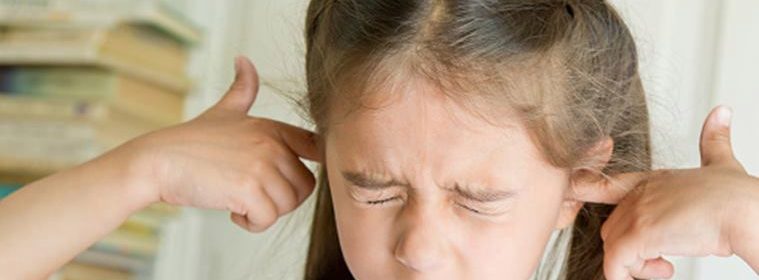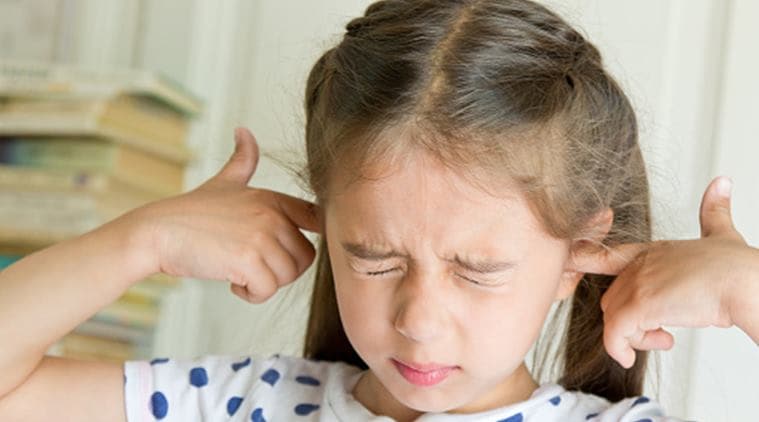Sound pollution: Excess noise can affect all age groups, even a foetus

Noise pollution has an adverse effect on infants and women; sometimes, due to loud velocity of sound, women can undergo a miscarriage or the foetus's heart stops and the entire behaviour of the infant can change. Children imbibe forgetful tendencies.
By Dr Alok Kumar Dwivedi
With rapid urbanisation and lifestyle changes, loud noise is omnipresent and has become a part of life. Indoor and outdoor environmental noise pollution have been documented as a serious health hazard with increasing adverse effects on the foetus, infants, children, adolescents and adults. “Noise” means an unwanted or undesirable sound that leads to physical and mental problems. In fact, when the sound exceeds its limit, it becomes fatal for human health which includes everyone. Noise pollution may cause temporary or permanent hearing impairment. The most direct harmful effect of excessive noise falls on the ears. Many times, extreme noise ruptures the ear drums.
Exposing ears to prolonged and high intensity of noise more than 85 db can lead to permanent hearing loss. Cochlea is the main sense organ of hearing; it has very delicate hair cells which detect sound frequencies. These cells are severely damaged if exposed to prolonged duration of sound intensity of around 85 to 125 dB. The main sources of such ear-splitting noise are machinery, vehicles, loud music, using headphones or the extreme instances of noise produced by aeroplane, missile or gun firing.
Noise induced hearing loss and non-auditory adverse effects due to noise pollution, are being increasingly diagnosed in all age groups including the foetus.
Effects of sounds on children
Young children: One of the most common ways young children are exposed to excessive noise is via noisy toys. Many toys are designed to be played at a distance from the body, but a young child will bring the toy close to his/her face and ears. By doing this, the resulting sound is louder and therefore more damaging. Some toys can reach 100dB or more if placed close to the ear.
Tweens and teens: Research has shown that there has been an increase in hearing loss in adolescents during the past three decades. What is even more frightening is that a loss of hearing may go undetected for many years after chronic exposure to high levels of noise. This means that the hearing loss caused by the noise teenagers are exposing themselves to today might not surface for many years.
Potential sources of loud noise include playing a musical instrument, attending concerts, and using personal headphones to listen to music or games, as well as lawn mowing, hunting or target shooting. Teenagers should be advised to limit the duration and intensity of sound exposure or noisy activities, such as concert-going or playing in a band, and to use hearing protection whenever engaged in these activities. Outdated motorised vehicles, machinery, increasing traffic, congested residential areas, crowded malls and unregulated commercial and industrial noise have become a source of noise pollution with long-term disability.
Also Read| Being Baba: What music is right for your child’s ears?
Impact on infants and women
Noise pollution has an adverse effect on infants and women; sometimes, due to loud velocity of sound, women can undergo a miscarriage or the foetus’s heart stops and the entire behaviour of the infant can change. Children imbibe forgetful tendencies. Noise can pose a serious threat to a child’s physical and psychological health, including learning and behaviour. For example, noise can:
Interfere with speech and language: Repeated exposure to noise during critical periods of development may affect a child’s acquisition of speech, language, and language-related skills, such as reading and listening.
Impair learning: The inability to concentrate in a noisy environment can affect a child’s capacity to learn.
Impair hearing: Tinnitus, often described as a ringing or buzzing sound in the ear, is a symptom associated with many forms of hearing loss. NIHL is a permanent hearing impairment resulting from prolonged exposure to high levels of noise or by sudden high level (impulse) noise
Disturb the cardiovascular system: Elevated blood pressure and other cardio-vascular ailments can be found in children who are chronically exposed to loud noise.
Disrupt sleep: Noise can awaken a child or disrupt his or her sleep patterns
Vulnerable groups of children
Preterm, low birth weight and small for gestational age babies, children with dyslexia and hyperactivity, children on ototoxic medication.
Effects of noise pollution on other age groups
Health experts believe that rising noise gives rise to neurological disease, nervous breakdown, hypertension, vision, dizziness, excessive sweating, and exhaustion. The noise not only creates irritability, anger, but also accelerates the heart rate by increasing blood flow in the arteries. The constant noise increases the amount of cholesterol in the blood, which contracts blood vessels, increasing the likelihood of cardiovascular disease. As rapid noise hinders sleep, insomnia has adverse effects on human functioning. The person becomes irritable, angry, tired and tense, and he even becomes neurotic.
Minimising the risks
Take the following steps to protect your child from the physical and psychological effects of noise:
· Instruct him or her to walk away from sources of loud noises.
· Limit the amount of time spent on noisy activities.
· Lower the volume.
· Have your child’s hearing tested if he/she routinely participates in noisy activities, such as playing an instrument or attending concerts or sporting events.
· Create a quiet learning and sleeping environment.
· Avoid the prolonged use of earphones/ Bluetooth speakers.
It is important that areas of noise pollution are identified and corrective measures are taken. Loudspeakers and vehicular horns should be banned except in emergencies. Pregnant women, foetus, newborns, infants and children are most susceptible to noise induced health hazards and should be given utmost protection. It is important that the public is educated and informed repeatedly and regularly regarding health hazards of noise. Traffic noise should be regulated to be within safe limits. Bus-stands, railway stations and airports should be moved away from residential areas. Houses should be sound proofed suitably.
Also Read| 3 breathing exercises children can practise to cope with air pollution
(The writer is Consultant – Paediatrics and Neonatology, Cloudnine Group of Hospitals, Noida.)
Source: Read Full Article
